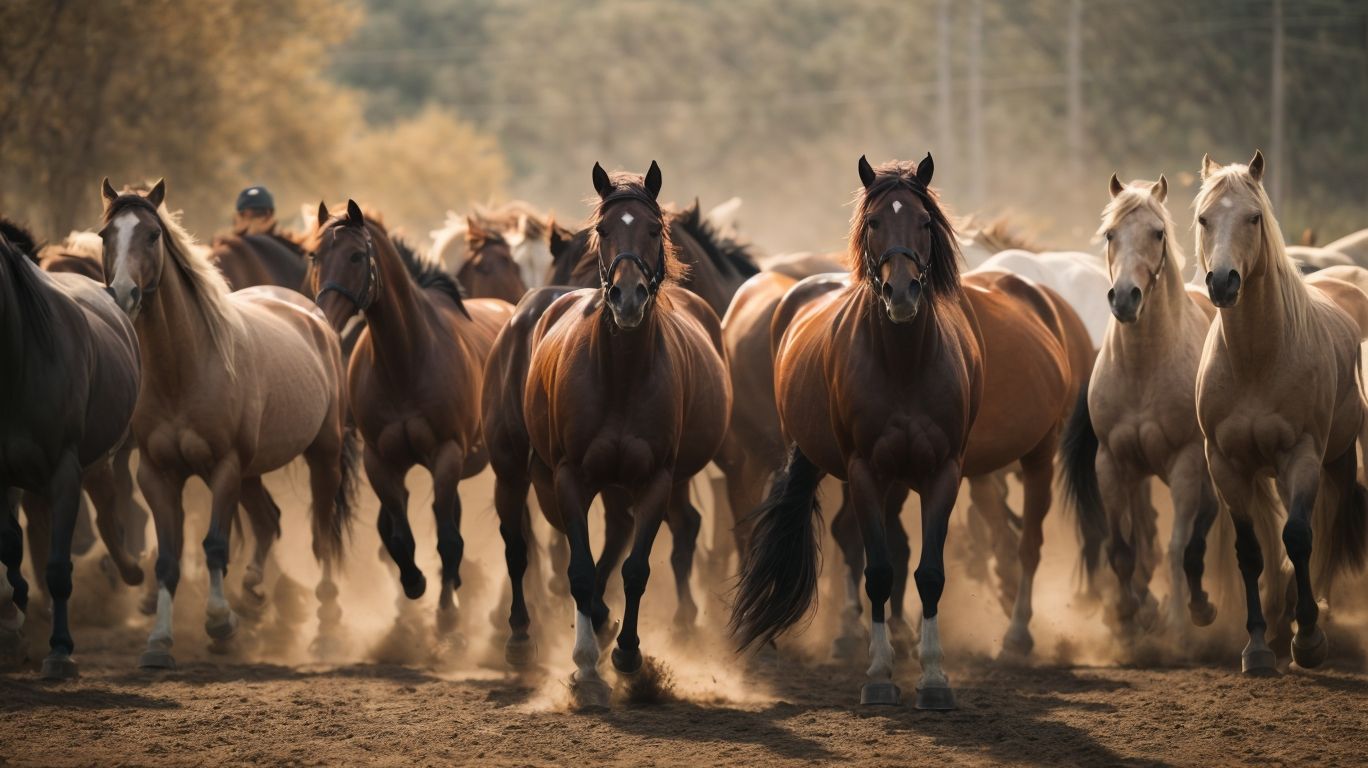Horse behavior management, specifically horse aggression management, is an important aspect of equine care and handling. Understanding and addressing horse aggression is crucial for the safety of both humans and other horses. Horse aggression can stem from various causes, such as fear and insecurity, dominance and territory, and social hierarchy and rank. Recognizing the signs and types of horse aggression, whether directed towards humans or fellow horses, is essential for preventing incidents and promoting a harmonious environment. Proper handling and training, along with respecting boundaries and personal space, play a vital role in preventing horse aggression. Managing horse aggression involves identifying triggers, establishing clear rules and boundaries, implementing positive reinforcement and reward-based training, and employing desensitization techniques. Seeking professional help may be necessary in certain cases. With effective management strategies, horse aggression can be mitigated, ensuring the safety and well-being of all involved.
Key takeaways:
- Understanding horse aggression: Horse aggression can stem from fear, dominance, or social hierarchy. It is important to recognize the signs and types of aggression towards humans and other horses.
- Preventing horse aggression: Proper handling, training, and respect for boundaries and personal space are essential in preventing horse aggression. Positive reinforcement and reward-based training can also be effective.
- Managing horse aggression: Identifying triggers, establishing clear rules and boundaries, and implementing desensitization techniques can help manage horse aggression. Seek professional help when needed to address the issue effectively.
Horse Behavior Management
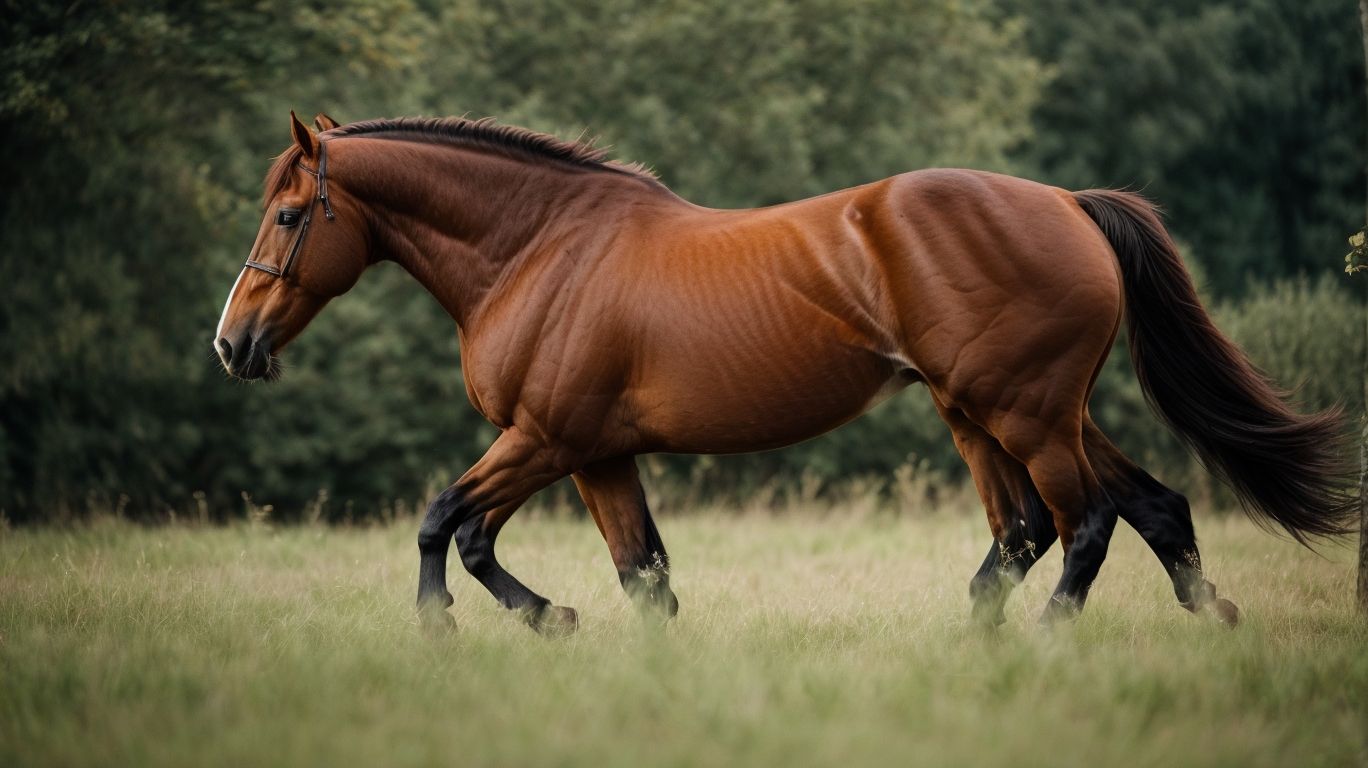
Photo Credits: Www.Horsespeakeducation.Com by Ethan Nguyen
Understanding how horses behave is fundamental to their management and well-being. In this section, we will delve into the fascinating world of horse behavior. From exploring the intricacies of equine behavior to understanding deviations from normal patterns, we’ll unlock insights to help us better care for these majestic animals. We’ll uncover how the highly social nature of horses plays a crucial role in their behavior and provide valuable perspectives for effective horse behavior management. So saddle up and let’s embark on this enlightening journey into the world of horse behavior.
Understanding Horse Behavior
Understanding horse behavior is vital for effective horse management.
Horses, being highly social animals, exhibit behaviors influenced by various factors including fear, dominance, and social hierarchy.
Deviations from normal equine behavior can serve as indicators of underlying issues.
To effectively address and prevent horse aggression, it is essential to practice proper handling, training, and respect for boundaries.
A crucial step in managing aggression is to identify triggers, establish clear rules, and employ positive reinforcement techniques.
Additionally, providing a suitable living space and reducing boredom through proper feeding and environmental management play significant roles.
Seeking professional assistance and implementing behavior modification techniques can also contribute to resolving problematic behavior effectively.
Deviation from Normal Equine Behavior
When it comes to horse behavior, it is crucial to have a good understanding of what is considered normal and what deviates from it. Deviation from normal equine behavior can serve as an indication of underlying issues or problems. Some indications of deviation may include excessive aggression, unpredictable behavior, changes in eating or drinking habits, or abnormal movement patterns. Being observant and attentive to any changes in behavior is essential for horse owners and handlers, as these changes could potentially be early warning signs of physical or psychological issues. Seeking the advice of a professional and obtaining appropriate training or intervention can assist in addressing and managing deviations from normal equine behavior.
Highly Social Nature of Horses
The highly social nature of horses is a crucial aspect of their behavior that needs to be understood and appreciated.
- Herd animals: Horses are naturally herd animals, meaning they thrive in the company of other horses.
- Social hierarchy: Within a herd, a social hierarchy is established, with dominant and submissive roles.
- Communication: Horses use various forms of communication, including body language, vocalizations, and grooming, to interact with other herd members.
- Bonding: Horses form strong bonds with their herd members, and separation or isolation can lead to stress and anxiety.
- Play and mutual grooming: Horses engage in playful behaviors and mutual grooming to strengthen social bonds and alleviate stress.
Horse Aggression Management

Photo Credits: Www.Horsespeakeducation.Com by Douglas Garcia
Managing horse aggression requires a deep understanding of these magnificent creatures and the intricacies of their behavior. In this section, we’ll dive into the fascinating world of horse aggression management, exploring what drives horses to exhibit aggressive behavior. From understanding the root causes and triggers to recognizing the signs and types of aggression, we’ll equip you with the knowledge to establish a harmonious bond with your equine companions. So saddle up, as we embark on this journey to tame the wild side of our majestic equine friends.
Understanding Horse Aggression
Incorporating a deep understanding of horse aggression is crucial for effectively managing and preventing aggressive behavior in horses. There are various factors that can contribute to horse aggression, including fear and insecurity, dominance and territory, and social hierarchy and rank. It is vital to be able to recognize the signs and types of horse aggression, whether it is directed towards humans or other horses. Proper handling and training, along with a strong emphasis on respecting boundaries and personal space, play a significant role in preventing horse aggression. Implementing effective management techniques involves identifying triggers and practicing avoidance, establishing clear rules and boundaries, and utilizing positive reinforcement and reward-based training methods. Seeking professional help and taking into consideration environmental and feeding factors can also greatly contribute to effectively managing horse aggression.
In a remarkable true story that underscores the importance of understanding horse aggression, there was a horse named Thunder who was notorious for displaying aggressive behavior towards humans and other horses. Through patient training and the application of positive reinforcement techniques, Thunder’s aggression gradually diminished. By consistently respecting Thunder’s boundaries and establishing clear rules, his behavior improved significantly. The guidance of a professional trainer, combined with the implementation of desensitization techniques, transformed Thunder into a well-behaved and calm horse. This success story serves as a powerful testament to the importance of actively understanding and managing horse aggression in order to create a harmonious and safe environment for both horses and humans.
Causes of Horse Aggression
Horse aggression can have various causes, including fear and insecurity, dominance and territoriality, and social hierarchy and rank within the herd. Understanding these causes is essential for effectively managing and preventing aggressive behavior in horses. Fear and insecurity can lead to defensive aggression, while dominance and territory-related aggression can arise from the need to establish dominance or defend resources. Aggression can also be influenced by the social hierarchy and rank of horses within a herd. Identifying the specific causes of horse aggression is crucial in developing appropriate management strategies to address the issue.
Fear and Insecurity
To address fear and insecurity in horses, it is crucial to understand that fear and insecurity are common behavioral issues in horses. Horses may display aggression when feeling fearful or insecure, which can be observed through their body language and actions. Identifying triggers, such as loud noises or unfamiliar surroundings, is key to preventing or minimizing episodes of fear and insecurity. By being aware of these triggers, horse owners and trainers can create a safe and predictable environment for their horses.
Establishing clear rules and boundaries is another effective strategy for addressing fear and insecurity in horses. When horses have clear guidelines to follow, they feel more secure and confident in their surroundings. Positive reinforcement and reward-based training techniques are also essential tools for building confidence and reducing anxiety in horses. By rewarding desired behaviors, horse owners and trainers can help their horses overcome fear and insecurity.
In severe cases of fear and insecurity, seeking professional help from an experienced animal trainer is highly recommended. These professionals have the expertise and knowledge to assess the horse’s behavior and develop a tailored training plan to address fear and insecurity. They can provide guidance and support to both horse and owner during the training process. Remember that addressing fear and insecurity in horses takes time and patience, but with the right approach, it is possible to help horses overcome these issues and create a harmonious bond between horse and owner.
Dominance and Territory
Understanding dominance and territory is essential when addressing horse aggression. Horses are hierarchical animals and naturally exhibit dominance behaviors to establish their position within the herd. Dominance can manifest in various scenarios, including during mealtime or in unfamiliar surroundings where horses might compete for limited resources. Territory also plays a significant role for horses as they seek to establish and defend their personal space. To effectively manage horse aggression associated with dominance and territory, it is crucial to establish clear rules and boundaries, provide appropriate training and handling, and utilize positive reinforcement techniques. Seeking assistance from a professional horse trainer or behaviorist can be highly advantageous in effectively managing and modifying these behaviors.
Here are some suggestions to incorporate dominance and territory management:
– Consult with an experienced horse trainer or behaviorist for guidance on managing aggression related to dominance.
– Establish a consistent routine and schedule to instill a sense of security in horses thereby reducing the likelihood of territorial disputes.
– Employ positive reinforcement techniques such as rewarding desired behaviors and redirecting negative behaviors to encourage positive interactions and mitigate aggression.
– Ensure that each horse has ample space and resources to minimize competition and diminish the need for territorial disputes.
Social Hierarchy and Rank
Social hierarchy and rank play a crucial role in horse behavior and interactions within a herd. In order to understand and manage horse aggression, it is necessary to comprehend the dynamics of social hierarchy. Here is a breakdown of the sub-topic in a table format:
| Sub-topic |
|---|
| Social Hierarchy and Rank |
| – Determines herd structure |
| – Influences dominant roles |
| – Establishes pecking order |
| – Impacts horse interactions |
To effectively manage horse aggression, it is important to respect the social hierarchy and establish clear rules and boundaries. Positive reinforcement and reward-based training can help reinforce desired behavior and reduce aggression. Seeking professional help may be necessary in extreme cases. Creating a safe and enriched environment, and providing appropriate feeding and socialization opportunities can also alleviate aggression.
Signs and Types of Horse Aggression
- Signs and types of horse aggression can be categorized as biting, kicking, charging, and excessive vocalizations.
- Signs of horse aggression can manifest in various types, including redirected aggression, territorial aggression, defensive aggression, and social aggression.
- Redirected aggression occurs when a horse takes out its frustration or aggression on a nearby object or person.
- Territorial aggression, one of the types of horse aggression, is displayed when a horse defends its space or resources from perceived intruders.
- Defensive aggression is a response to a perceived threat or fear, such as when a horse feels cornered or trapped.
- Social aggression, another type of horse aggression, is related to hierarchical behavior, with horses asserting dominance over others.
Aggression towards Humans
Aggression towards Humans in horses is a critical issue that necessitates careful management and understanding. When dealing with Aggression towards Humans, there are several important considerations to keep in mind.
- Recognize the triggers: It is crucial to identify the specific situations or stimuli that lead to Aggression towards Humans in horses. This understanding can aid in preventing future incidents.
- Establish boundaries: Teaching horses to respect personal space and enforcing clear rules are essential steps in preventing any Aggressive behavior towards humans.
- Proper handling and training: Consistent and positive training plays a vital role in reducing Aggression towards Humans in horses.
- Seek professional help: If the Aggression persists or escalates, it is recommended to consult with an experienced animal trainer or behaviorist who can provide valuable guidance.
Aggression towards Other Horses
Aggression towards other horses is a prevalent issue in the management of horse behavior. Understanding the causes, signs, and types of this aggression is crucial for effectively addressing it. Presented below is a table that demonstrates some key aspects related to this matter:
| Causes of Aggression | Signs of Aggression | Types of Aggression |
|---|---|---|
| Dominance and Territory | Biting | Protective Aggression |
| Social Hierarchy and Rank | Kicking | Predatory Aggression |
| Fear and Insecurity | Charging | Redirected Aggression |
Applying proper management techniques, such as establishing clear boundaries and rules, implementing positive reinforcement, and desensitization, can assist in reducing aggression. Seeking professional help is advisable in severe cases. Interestingly, aggression towards other horses can also be decreased by ensuring appropriate horse housing and barn conditions.
Preventing Horse Aggression
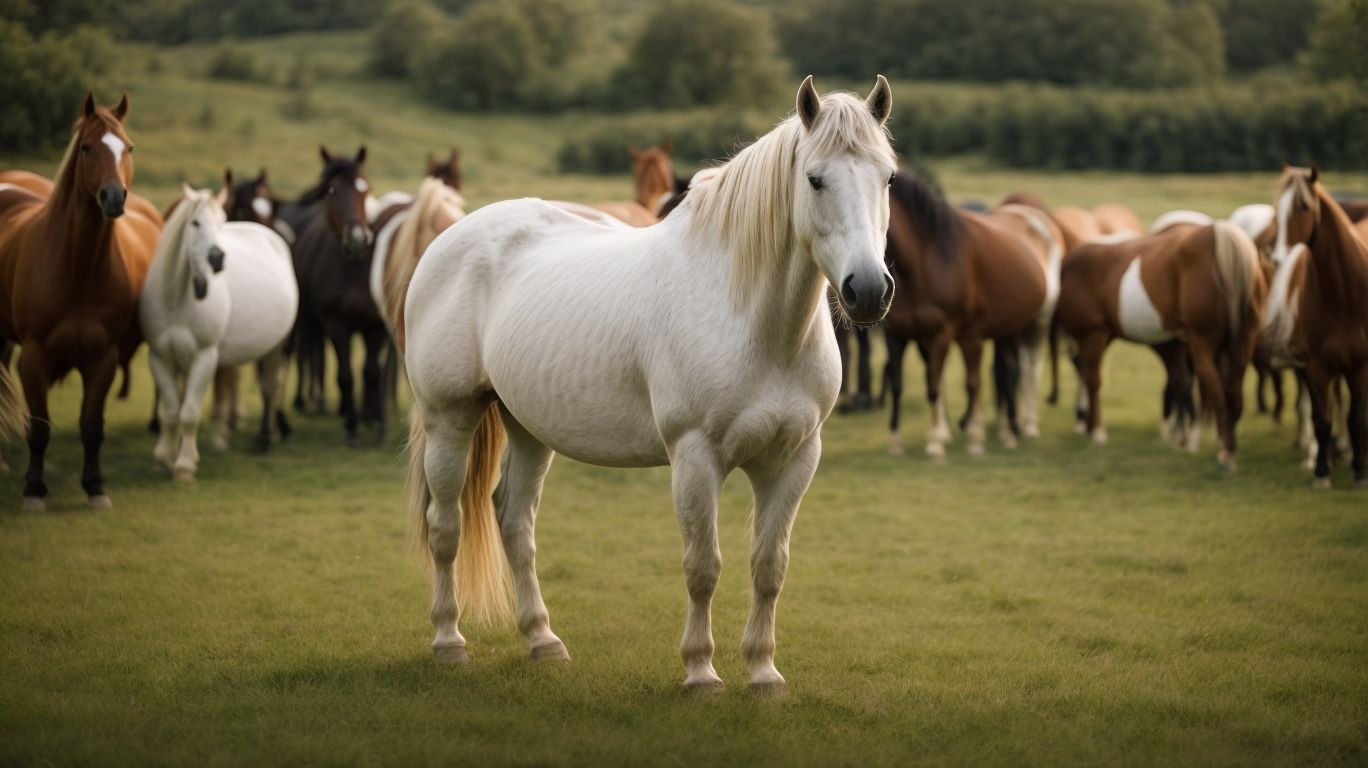
Photo Credits: Www.Horsespeakeducation.Com by Austin Hall
When it comes to preventing horse aggression, there are effective strategies that every horse owner should know. In this section, we’ll explore two key sub-sections: proper handling and training, and respecting boundaries and personal space. Discover how implementing these techniques can create a harmonious and safe environment for both horse and handler. So, let’s delve into the world of horse behavior management and learn how to prevent horse aggression with these essential techniques.
Proper Handling and Training
Proper handling and training are essential for effectively managing horse behavior and preventing aggression. Here are a few steps to naturally incorporate these keywords:
- Establish trust and build a positive relationship with the horse through consistent and clear cues.
- Use proper handling and training techniques to communicate with the horse effectively.
- Practice desensitization techniques, an important part of proper handling and training, to help the horse become more comfortable with various stimuli.
- Implement reward-based training methods, which are crucial for proper handling and training, to encourage desired behavior and discourage unwanted behavior.
- Provide regular exercise and mental stimulation to maintain the horse’s physical and mental balance, as this is an important aspect of proper handling and training.
- Seek professional help, such as working with experienced trainers, if needed, as they can provide valuable guidance in proper handling and training.
Respect Boundaries and Personal Space
Respecting boundaries and personal space is of utmost importance when it comes to managing horse aggression and building trust. Horses have clearly defined personal space, and encroaching upon it can trigger defensive or aggressive behavior. To demonstrate respect for their boundaries, it is essential to follow these guidelines:
– Approach horses in a calm and unhurried manner, avoiding sudden or abrupt movements.
– Allow horses ample space when they are eating or resting.
– Refrain from staring directly into their eyes, as this can be perceived as a threat.
– Utilize positive reinforcement techniques to reward horses for complying with your personal space.
It is a fact that horses possess a fight-or-flight response, which means they instinctively flee from perceived dangers. By respecting their boundaries, we create an environment that is safe and harmonious, benefiting both humans and horses.
Managing Horse Aggression
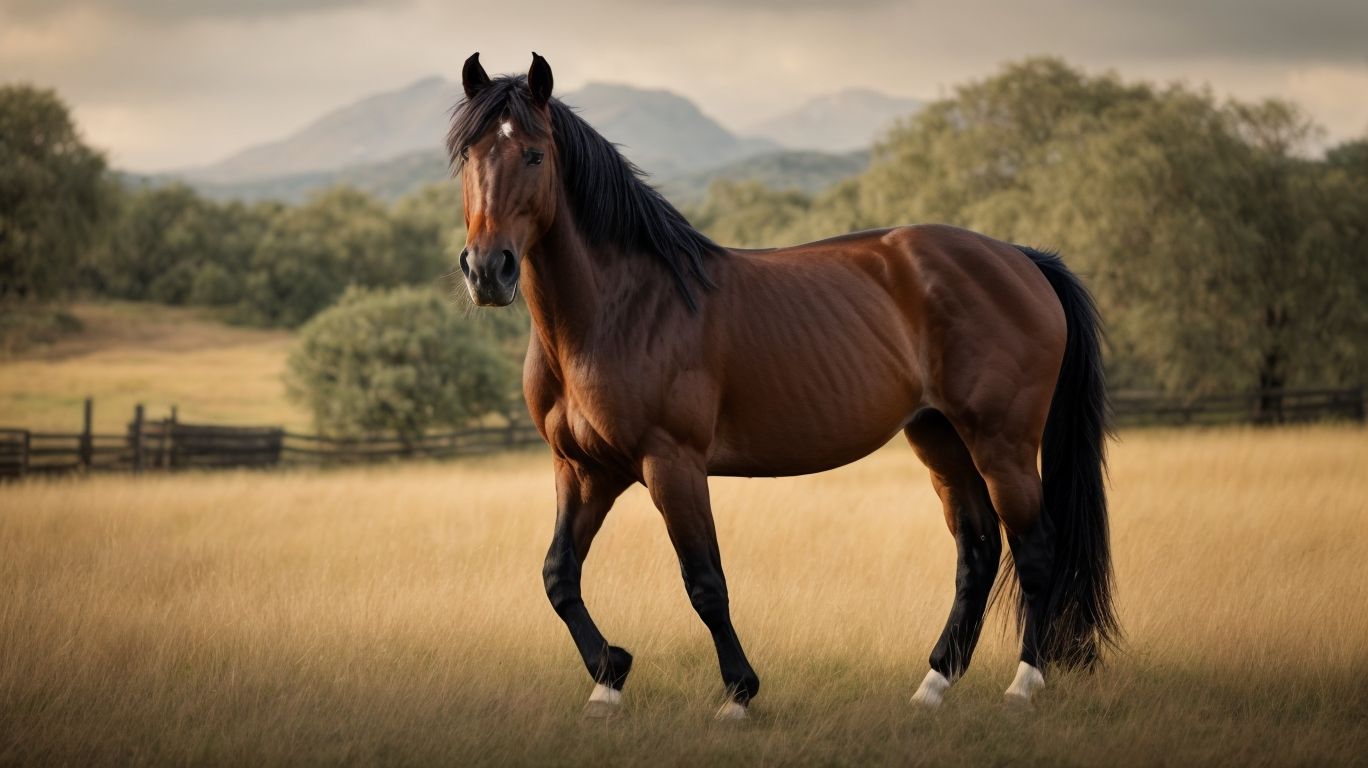
Photo Credits: Www.Horsespeakeducation.Com by Russell Wilson
Discover effective strategies for managing horse aggression in this section. Explore key sub-sections that delve into identifying triggers and avoidance, establishing clear rules and boundaries, utilizing positive reinforcement and reward-based training, and implementing desensitization techniques. Uncover practical techniques backed by experts in horse behavior management to ensure a harmonious and safe environment for both horses and handlers.
Identifying Triggers and Avoidance
Identifying triggers and avoidance is crucial in managing horse aggression. Here are steps to help in this process:
- Observe and document: Pay close attention to situations that trigger aggression and record details such as location, time, and specific behaviors.
- Recognize body language: Learn to interpret the horse’s body language, as certain cues may indicate stress or aggression.
- Identify common triggers: Look for patterns in the horse’s behavior to identify common triggers such as specific sounds, objects, or handling techniques.
- Make necessary adjustments: Modify the horse’s environment or routines to avoid triggers as much as possible.
- Gradual exposure: When avoidance is not possible, slowly expose the horse to the trigger in a controlled environment, using desensitization techniques.
By understanding triggers and implementing avoidance strategies, horse owners can effectively manage aggression and create a safer environment for both the horse and handlers.
Establishing Clear Rules and Boundaries
Establishing clear rules and boundaries is crucial for managing horse aggression. By setting clear expectations and enforcing consistent boundaries, horse owners can reduce the occurrence of aggressive behavior. This includes establishing appropriate personal space, setting rules for interactions with humans and other horses, and using consistent cues during training. Clear communication is key in establishing trust and respect between horses and their handlers. By providing clear guidance and structure, horse owners can create a safe and harmonious environment for both humans and horses.
Fact: Horses are highly perceptive animals and can sense their handler’s confidence and consistency, making establishing clear rules and boundaries even more important in establishing a good relationship.
Positive Reinforcement and Reward-Based Training
Positive reinforcement and reward-based training are highly effective approaches in managing horse aggression and promoting desired behaviors. Implementing positive reinforcement techniques in horse training can establish a stronger bond and trust between the horse and the handler. Here are some important considerations for positive reinforcement and reward-based training:
| 1. | Utilize treats or praise: | Offering rewards such as treats or verbal praise serves as motivation for the horse to repeat desired behaviors. |
| 2. | Timing is essential: | It is crucial to provide the reward immediately after the desired behavior is performed to reinforce the association. |
| 3. | Consistency is key: | Maintaining consistency in your cues and rewards helps the horse understand what is expected of them. |
| 4. | Break tasks into smaller steps: | Teaching complex behaviors can be accomplished by breaking them down into smaller, more manageable steps. Each successful progression should be rewarded. |
| 5. | Gradually reduce rewards: | Once the desired behavior is established, gradually decrease the frequency of rewards while occasionally reinforcing to sustain the behavior. |
By applying positive reinforcement and reward-based training methods, horse owners can develop a respectful and cooperative relationship with their horses while effectively managing aggression and promoting desired behaviors.
Implementing Desensitization Techniques
Implementing desensitization techniques is absolutely essential when it comes to managing horse aggression. These techniques play a vital role in helping horses become accustomed to stimuli that would normally elicit an aggressive response. Here are some crucial steps to follow in order to achieve success in this process:
- Gradually introduce the horse to the stimulus.
- Begin with a low-intensity version of the stimulus and gradually increase its intensity over time.
- Ensure to reward the horse for displaying calm and non-aggressive behavior.
- It is important to repeat the entire process several times in order to strengthen the desired response.
Pro-tip: Remember, it is crucial to maintain patience and consistency throughout the desensitization process. Rushing or forcing the horse can potentially result in setbacks or even heightened aggression.
Seeking Professional Help
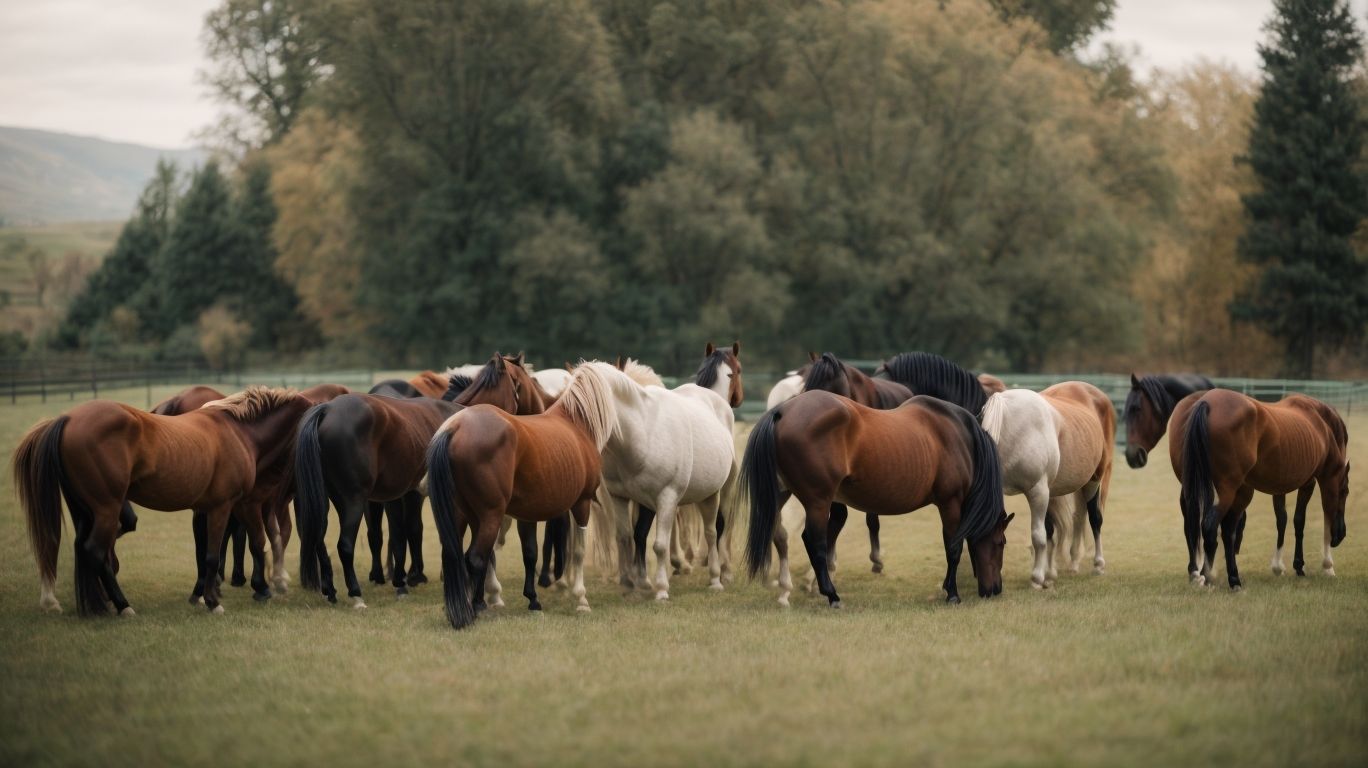
Photo Credits: Www.Horsespeakeducation.Com by Edward Robinson
When it comes to dealing with horse aggression, it’s crucial to seek professional help. Professionals, including skilled trainers or veterinarians who specialize in horse behavior, can offer the necessary expertise and direction to effectively manage aggressive behaviors. They have the capacity to assess the underlying causes of aggression, create a customized management plan, and provide training techniques to alter the horse’s behavior. By seeking professional assistance, you ensure a safer and more effective approach to handling horse aggression, which ultimately reduces the risk of injury to both the horse and the handler.
Environment and Feeding Considerations
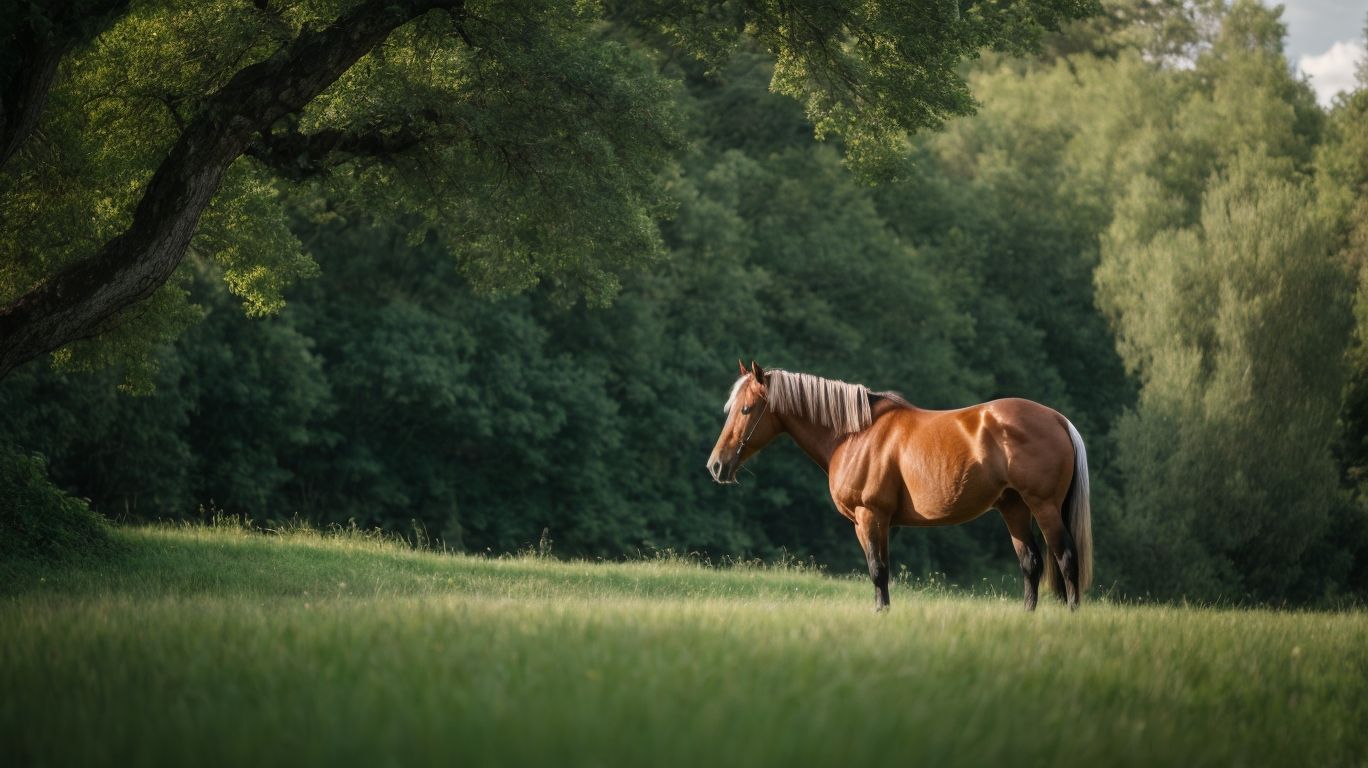
Photo Credits: Www.Horsespeakeducation.Com by Peter Martinez
When it comes to managing horse behavior and tackling aggression, one crucial factor to consider is the environment and feeding. In this section, we’ll explore the key aspects of horse housing and barn conditions, feeding techniques, and environmental management strategies that can help reduce boredom and promote a harmonious atmosphere for our equine friends. So saddle up and let’s dive into the world of creating the perfect environment for happy, well-behaved horses!
Horse Housing and Barn Conditions
Proper horse housing and barn conditions are crucial for the well-being and safety of horses. When it comes to horse housing and barn conditions, there are several important factors to consider:
- Space: Horse housing and barns should provide ample space for horses to move, play, and socialize with other horses.
- Ventilation: Adequate airflow is essential to minimize respiratory issues and prevent the buildup of ammonia in horse housing and barns.
- Lighting: It is ideal to have natural lighting in horse housing and barns, but artificial lighting should also be incorporated to ensure horses have enough light to see and prevent accidents.
- Stall design: When designing stalls in horse housing and barns, it is important to ensure they are well-constructed, with smooth surfaces and no sharp edges to avoid potential injuries to the horses.
- Bedding: The choice of bedding materials in horse housing and barns is crucial. The bedding should provide comfort to the horses, absorb moisture effectively, and be easy to clean.
- Feeding: Horse housing and barns should have a well-designed feeding system that minimizes feed wastage and allows for proper monitoring of feed intake by the horses.
- Water supply: Providing clean and fresh water at all times is vital in horse housing and barns. The water should be easily accessible, allowing horses to drink freely.
- Cleanliness: Regularly cleaning and maintaining the barn in horse housing and barns is essential. This practice helps reduce the risk of parasites, disease, and unpleasant odors.
Feeding Horses
Feeding horses properly is essential for maintaining their overall health and well-being. When it comes to providing nutrition for horses, it is important to consider the following guidelines:
- Ensuring a balanced diet: Forage, such as hay or pasture, should be included in the horses’ diet as a source of fiber. Additionally, grains and concentrates can be provided to supplement their nutritional needs.
- Adjusting feed according to activity level: The amount of feed given to horses should be adjusted based on their workload. Active horses with higher activity levels will require more calories compared to those with lighter activity levels.
- Monitoring weight and body condition: Regularly assessing the weight and body condition of horses is crucial to ensure that they neither become underweight nor overweight. Maintaining an appropriate weight is essential for their overall health.
- Offering fresh water: Horses should have access to clean and fresh water at all times. Adequate hydration is vital for their well-being.
- Providing appropriate supplements: Consulting with a veterinarian is recommended to determine if any specific supplements are necessary for a horse based on its individual needs.
Environmental Management to Reduce Boredom
To effectively reduce boredom in horses, it is crucial to implement proper environmental management techniques. These include providing ample turnout time in spacious pastures, allowing for natural movement and social interaction. Additionally, it is important to ensure a stimulating environment by incorporating varied terrain such as hills and obstacles, which encourages physical activity. To engage their minds and prevent boredom, offering toys such as treat-filled balls or hanging objects is recommended. Another key strategy is implementing a consistent routine that includes regular exercise, feeding, and social interaction, as this provides mental stimulation and structure. Rotating pasture companions is also advisable to prevent social isolation and promote socialization.
By incorporating these strategies for environmental management, horse owners can effectively create a stimulating environment that significantly reduces boredom and improves the overall well-being of their horses.
Behavior Modification Techniques
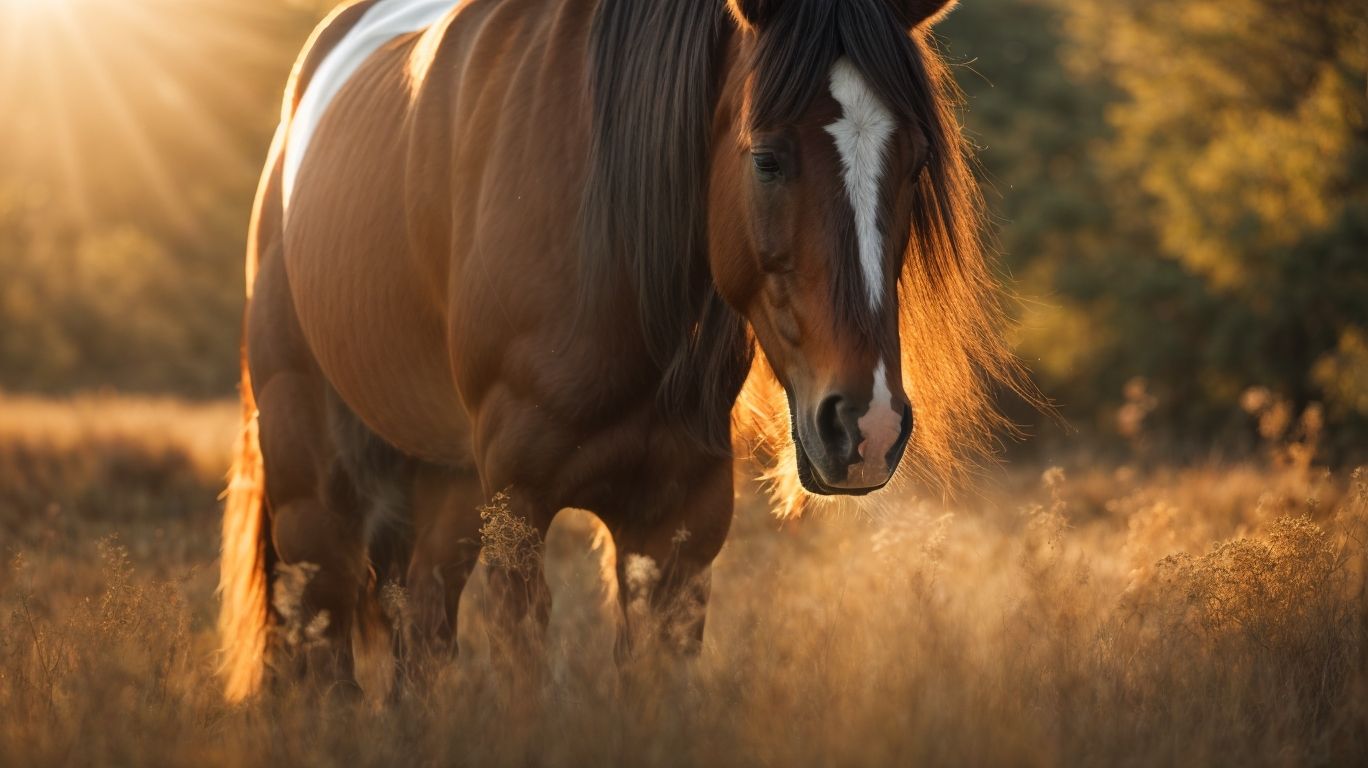
Photo Credits: Www.Horsespeakeducation.Com by Elijah Gonzalez
Behavior modification techniques are essential when it comes to managing horse aggression. In this section, we’ll dive into effective methods that have been scientifically proven to bring about positive changes in horse behavior. We’ll explore the power of positive reinforcement and techniques that encourage desirable responses. Through response substitution, we can redirect and transform aggressive tendencies into more desirable behaviors. Get ready to discover a world of effective approaches for managing horse aggression.
Scientifically Proven Approach
A scientifically proven approach is crucial when managing horse aggression. This method involves using techniques that have undergone extensive research and have been demonstrated to effectively modify equine behavior. Positive reinforcement and reward-based training, response substitution, and implementing desensitization techniques are among the scientifically proven methods. These methods aim to establish a positive and respectful relationship between the horse and the handler while also addressing the underlying causes of aggression. By employing a scientifically proven approach, horse owners can ensure that they are utilizing safe, humane, and effective methods for managing and reducing aggression in horses.
Positive Reinforcement and Positive Techniques
Using positive reinforcement and positive techniques is essential when managing horse aggression and promoting good behavior. Here are some ways to incorporate these methods:
- Reward-based training: Utilize positive reinforcement, such as treats or praise, to strengthen desired behaviors and discourage any aggressive behavior.
- Clicker training: Combine a clicker sound with rewards to indicate when a horse has displayed positive behavior.
- Desensitization: Gradually introduce stimuli that may potentially trigger aggression, while rewarding the horse for maintaining a calm and relaxed state.
- Consistency: Ensure consistent application of positive reinforcement to encourage positive behaviors and abstain from negative reinforcement.
- Patience and understanding: Always bear in mind that horses respond most effectively to patient, empathetic, and respectful treatment.
By implementing these positive techniques, horse owners can establish a harmonious environment and nurture a bond of trust and cooperation with their equine companions.
Response Substitution
To effectively manage horse aggression, the technique of response substitution can be effectively utilized. Response substitution involves redirecting a horse’s aggressive behavior towards more desirable actions. By providing alternative outlets for their energy or frustration, such as engaging in a specific task or implementing training exercises, the horse’s aggressive tendencies can be channeled into more positive behaviors. For instance, instead of acting out aggressively towards other horses, the horse can be redirected to focus on groundwork exercises or obstacle courses. This method of response substitution allows the horse to learn new behaviors while effectively preventing the escalation of aggression.
Management Tips and Preventive Techniques
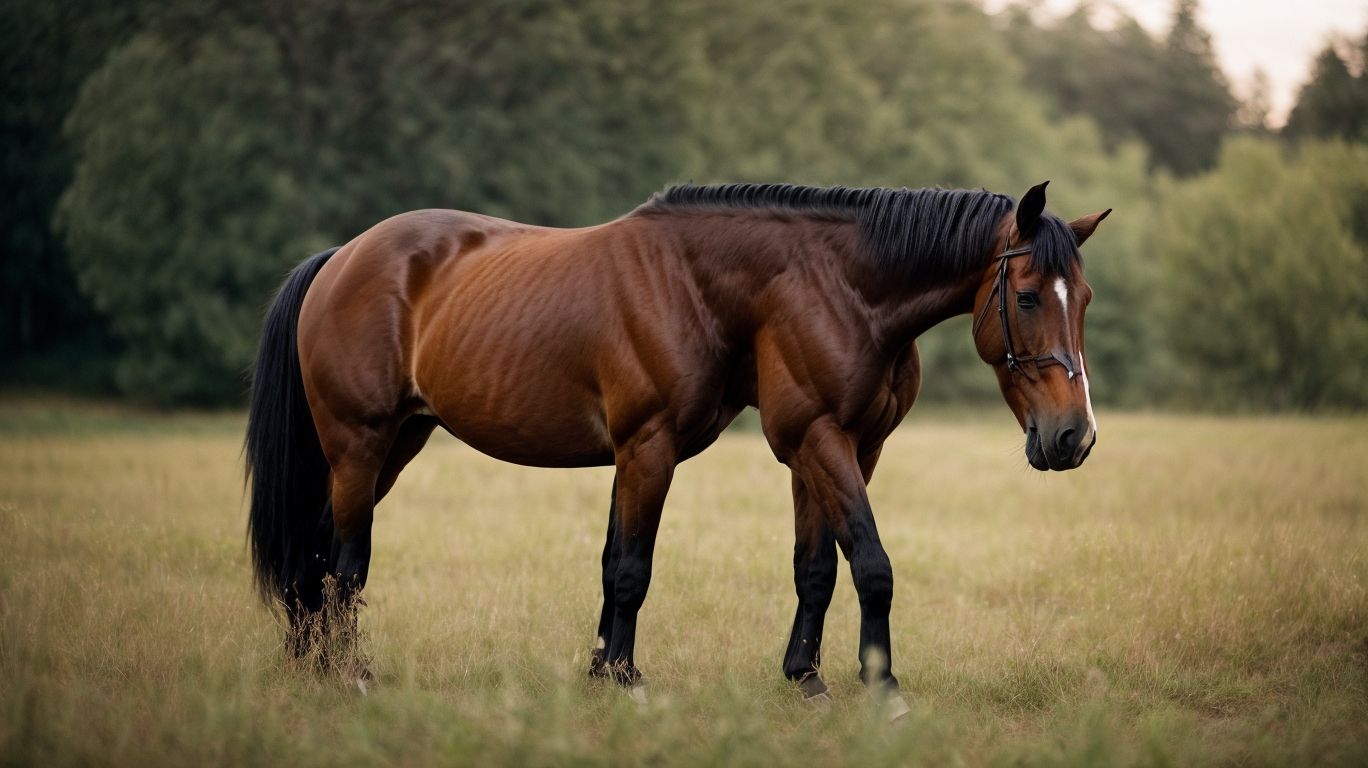
Photo Credits: Www.Horsespeakeducation.Com by Wayne Smith
Discover effective management tips and preventive techniques to promote a harmonious horse environment. From practicing good pasture management to creating a stress-free atmosphere, we’ll explore ways to ensure a balanced horse behavior. Learn how proper environmental management and reducing digestive problems play a crucial role in maintaining a calm and peaceful equine setting. Let’s dive into the world of horse behavior management and discover strategies that will enhance your horse’s well-being.
Practice Good Pasture Management
Good pasture management is essential for maintaining the health and well-being of horses. In order to practice good pasture management, here are some steps to follow:
1. Regularly assess the condition of the pasture, including grass quality and potential risks like poisonous plants.
2. Maintain proper grazing rotation to prevent overgrazing and allow for grass regrowth.
3. Control weed growth through regular mowing or targeted herbicide application to maintain the quality of the pasture.
4. Provide supplementary feed and access to clean water when necessary to support the horses’ nutritional needs.
5. Implement fencing to prevent horses from accessing areas with harmful plants or dangerous obstacles, ensuring their safety.
6. Regularly remove manure to reduce parasite infestation and promote a healthy environment for the horses.
7. Consider using pasture seeding or reseeding to ensure a diverse and nutritious forage base for the horses.
By practicing good pasture management, horse owners can ensure the overall health and vitality of their animals.
Management of the Environment
To effectively manage horse aggression, one must prioritize the management of the environment. Here are some crucial considerations to create a conducive environment for horses:
- Pasture Management: By implementing sound pasture management practices, such as ensuring adequate space, proper fencing, and regular rotation, territorial disputes and aggression can be minimized.
- Facility Design: It is important to design horse housing and barn conditions in a manner that allows for ample space for each horse and proper separation to avoid potential conflicts.
- Feeding Regime: A consistent and balanced feeding routine should be established, minimizing competition and ensuring each horse has sufficient access to food and water.
- Environmental Enrichment: Implementing strategies for environmental enrichment, such as providing toys, scratching posts, and promoting social interaction, can help alleviate boredom and redirect aggressive behaviors.
Fact: Horses are highly perceptive creatures that thrive in environments prioritizing their physical and mental well-being. This ultimately leads to healthier and happier animals.
Reducing Stress Factors
Reducing stress factors is essential for effectively managing horse aggression and promoting overall well-being. Here are several steps to consider:
- Creating a calm and structured environment with consistent routines.
- Providing access to adequate pasture and grazing time to fulfill natural behaviors.
- Implementing proper stall design and ventilation to minimize stress associated with confinement.
- Managing herd dynamics and social interactions to reduce competition and establish a harmonious hierarchy.
- Offering mental stimulation through toys, puzzles, and various exercise routines to prevent boredom.
- Utilizing positive reinforcement training methods to build trust and confidence.
- Regularly monitoring for any physical discomfort or health issues that may contribute to stress and addressing them promptly.
Reduce Digestive Problems
- Minimizing digestive problems in horses is essential for maintaining their overall health and well-being. To achieve this, follow these steps:
- Ensure a high-quality, balanced diet: Provide horses with a combination of nutritious hay, pasture, and appropriate concentrates to meet their dietary requirements.
- Ensure ample access to fresh water: It is crucial to allow horses to have continuous access to clean and fresh water to support proper digestion and hydration.
- Establish a regular feeding schedule: Maintain a consistent feeding routine to promote a healthy digestive system. Avoid overfeeding or sudden changes in feed type.
- Prioritize dental care: Regular dental check-ups and floating can prevent dental issues and facilitate proper chewing and digestion.
- Encourage slow feeding: Employ slow feeders or nets to promote slower eating, which can help prevent digestive problems and reduce the risk of colic.
- Implement a parasite control program: By regularly deworming horses, you can prevent digestive issues caused by parasites and maintain their overall health.
- Ensure regular exercise: Engaging horses in regular exercise can aid in digestion and prevent digestive problems associated with weight gain or a sedentary lifestyle.
- Monitor forage quality: Regularly assess the quality of hay or pasture to ensure it is free from mold or spoilage, which can lead to digestive complications.
- Seek veterinary advice: If a horse experiences chronic digestive problems, it is important to consult with a veterinarian for accurate diagnosis and suitable treatment.
Dealing with Problematic Behavior
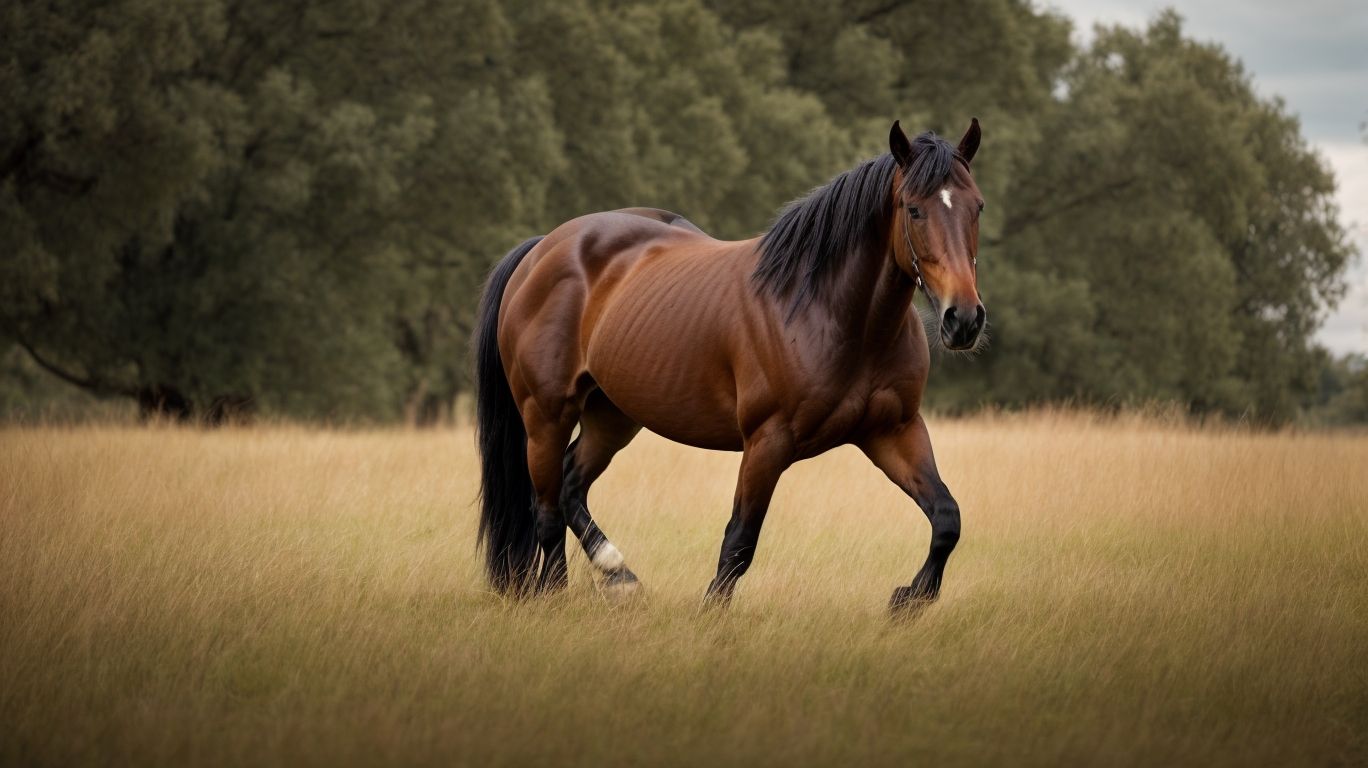
Photo Credits: Www.Horsespeakeducation.Com by Nicholas Martinez
Navigating the complex world of horse behavior can be a challenge, especially when faced with problematic behaviors. In this section, we will explore effective strategies and practical solutions to tackle these issues head-on. We’ll discuss step-by-step methods to solve behavior problems, the benefits of working with animal trainers, and alternative approaches to reducing aggression. Whether you’re a seasoned horse owner or just starting out, these insights will provide invaluable guidance in managing and understanding difficult horse behavior.
Solving Behavior Problems Step by Step
Solving behavior problems in horses requires a step-by-step approach and consistent implementation. Here are the steps to address and manage such issues:
- Identify the problem behavior: Observe and determine the specific behavior that needs to be addressed.
- Understand the underlying cause: Investigate the root cause of the behavior by assessing the horse’s environment, physical health, and training history.
- Develop a targeted training plan: Design a step-by-step plan to modify the behavior, focusing on positive reinforcement and reward-based techniques.
- Implement consistent training: Apply the training plan consistently and ensure that all handlers and riders follow the same approach.
- Seek professional help if needed: Consult with an experienced horse trainer or behavior specialist for guidance and support.
- Monitor progress and adjust as necessary: Assess the effectiveness of the training plan and make adjustments if needed to address any challenges or setbacks.
By following these steps and being patient and persistent, horse owners can successfully solve behavior problems step by step and promote positive behaviors in their horses.
Working with Animal Trainers
Working with Animal Trainers is crucial for effectively managing horse aggression and addressing problematic behavior. Animal trainers have the necessary expertise and experience to assess the root causes of aggression and implement appropriate training techniques. When it comes to working with trainers, here are some important considerations:
1. It is important to choose a qualified trainer who specializes in equine behavior and aggression management. This expertise is essential for tackling the specific needs of your horse.
2. Collaborate closely with the trainer to develop a customized training plan that is tailored to the unique requirements of your horse. This personalized approach will yield better results.
3. Consistently follow the trainer’s instructions and guidance to ensure continuous progress. This dedication is necessary for achieving positive behavior changes in your horse.
4. Maintain open communication with the trainer, discussing any concerns or challenges that arise during the training process. This will help address any issues promptly and effectively.
5. Regularly evaluate the progress and improvements in behavior with the trainer, making any necessary adjustments to the training plan. This ongoing assessment ensures that the training remains effective.
Always remember that working with a skilled animal trainer plays a vital role in successfully managing horse aggression and promoting positive behavior in your equine companion.
Seeking Alternative Ways to Reduce Aggression
When seeking alternative ways to reduce aggression in horses, it’s crucial to consider various methods. Here are a few options to explore:
- 1. Natural Remedies: Incorporate calming supplements or herbal remedies, such as chamomile or lavender, into the horse’s diet.
- 2. Alternative Therapies: Explore techniques like acupuncture, massage, or chiropractic adjustments to address any underlying physical issues that may affect the horse’s behavior.
- 3. Behavior Modification: Collaborate with an experienced animal behaviorist to create a customized behavior modification plan. This plan should focus on positive reinforcement and redirection techniques.
- 4. Environmental Enrichment: Ensure the horse has a stimulating and enriching environment to prevent boredom and reduce stress. This can be achieved by providing toys, varied turnout, and social interaction with other horses.
- 5. Training Techniques: Incorporate training methods that prioritize clear communication, respect, and trust-building exercises. This will help establish a stronger bond with the horse.
Some Facts About Horse Behavior Management – Horse Aggression Management:
- ✅ Horse owners should design horse housing in a way that allows horses to see other horses. (Source: Our Team)
- ✅ Feeding horses individually can reduce aggression and allow slow eaters to get their full ration. (Source: Our Team)
- ✅ The main portion of a horse’s diet should consist of forages to reduce digestive and behavioral problems. (Source: Our Team)
- ✅ Stalled horses should be fed small frequent meals instead of several large meals to reduce boredom and digestive problems. (Source: Our Team)
- ✅ If horses are fed in groups, there should be more feeders than the number of horses in the group, and the feed should be distributed rapidly so that all horses can start eating at the same time. (Source: Our Team)
Frequently Asked Questions
How can I prevent horse aggression when feeding them?
Feeding horses individually can help reduce aggression and allow slow eaters to consume their full ration. Distributing the feed rapidly among multiple feeders enables all horses to start eating at the same time, minimizing competition and aggressive behavior.
What are some important components of horse behavior management to prevent undesirable behaviors?
Managing behavior problems in horses involves several key components. These include addressing environmental factors, managing stressors, expectations, and the horse’s health. By modifying the environment, gradually desensitizing the horse to frightening stimuli, and ensuring appropriate health care, you can reduce the likelihood of undesirable behaviors.
How can I address horse aggression when they are turned out alone?
If a horse becomes agitated when turned out alone, a solution can be to turn them out with a buddy. Horses are highly social animals, and providing them with the opportunity to interact and establish social bonds can often alleviate aggression and promote positive behavior.
What are some tips for managing horse aggression in group settings?
When working with a group of horses, it’s important to be aware of their dominance hierarchy and watch for signs of aggression. If aggression arises, closely monitor the situation and separate horses if it becomes too aggressive. Maintaining a safe and controlled group dynamic is crucial to prevent any potential harm or escalation of aggressive behavior.
How can I reduce the likelihood of horses developing aggression toward people?
Horses should be handled with care, and any pain-induced or dominance-related aggression should not be overlooked. To minimize aggression towards humans, it’s essential to establish a sound understanding of basic principles in horse behavior and training techniques. By using passive techniques and avoiding the use of pressure or punishment, you can foster a positive and trusting relationship with your horse.
What should be considered when designing horse housing to prevent behavioral problems?
When designing horse housing, it’s important to consider a few factors to prevent behavioral problems. Horses should be able to see other horses, as they are social animals and benefit from contact with others. Fences and barriers should be easily visible to the horse to reduce the risk of accidents or anxiety. Additionally, keeping mares with foals separated from other horses, particularly stallions and geldings, can help maintain a safe and harmonious environment.
